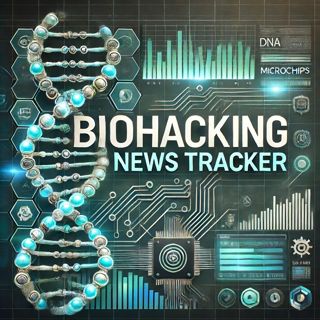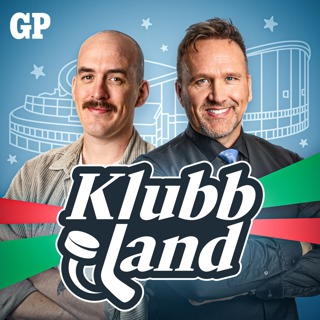
Biohacking: The Democratization of Science and Personal Health Autonomy
Biohacking, a term that arose in the late 20th century from the world of technology and hacking, involves applying the hacker ethic of decentralized knowledge to biology. It's about taking control of one’s own biology using a combination of medical, nutritional, electronic, and physical techniques. This practice has grown into a diverse and sprawling movement encompassing a wide range of activities, from simple dietary changes to profound genetic edits.Biohackers, often referred to as grinders or DIY biologists, embrace a wide spectrum of practices. Some focus on nutrigenomics, which examines the interaction between nutrition and genes to tailor personalized diets that optimize health. Others develop devices to augment human capabilities, such as implantable chips that can monitor and influence bodily functions or provide sensory enhancements.The range of biohacking extends to experimenting with gene editing technologies like CRISPR. CRISPR, which stands for Clustered Regularly Interspaced Short Palindromic Repeats, has been used by biohackers to modify organisms' genetics, including their own, in less formal settings than traditional labs. Though this invites significant ethical and safety debates, it highlights the biohacking community's role in democratizing science and technology.Josiah Zayner, a former NASA biochemist who famously injected himself with CRISPR DNA at a biotech conference in 2017, symbolizes one extreme of this spectrum. His actions sparked controversy and brought significant attention to the practice, raising questions about the risks associated with self-experimentation in biohacking.Beyond genetic modification, biohackers also employ a variety of gadgets and lifestyle hacks aimed at enhancing the body's function. Techniques such as intermittent fasting, extreme temperature exposure, heart rate variability training, and the use of nootropics—substances that can enhance cognitive function—are all parts of the biohacker’s toolkit.The community is varied, with some practitioners focusing on extending life, improving physical performance, or enhancing cognitive abilities, while others aim at merely optimizing their health through data obtained from biometric devices. Biohackers often share their findings and methods through online forums, blogs, and conferences, promoting an open-source ethos that challenges the conventional boundaries of scientific research and pharmaceutical development.This movement isn't without criticism, however. The medical and scientific communities often express concerns over the safety and ethics of unregulated biohacking activities. Issues such as potential harm from untested therapies, privacy concerning personal biometric data, and the implications of gene editing are at the forefront of discussions about responsible innovation.Despite these concerns, biohacking continues to grow, driven by a combination of curiosity, self-improvement goals, and disillusionment with traditional healthcare's limitations. It represents a unique intersection of technology, science, and personal health autonomy, reflecting broader societal shifts toward individual empowerment and participatory medicine.This content was created in partnership and with the help of Artificial Intelligence AI
5 Sep 20243min

"Blanca Blanco Embraces 20-Minute Biohacking Routine for Health Optimization"
Biohacking is an evolving frontier where technology and biology blend to enhance human performance, health, and possibly extend lifespans. Broadly defined, biohacking can include everything from lifestyle and dietary changes to medical interventions and the use of advanced technology.One vivid example of mainstream biohacking involves actress Blanca Blanco, who has embraced this cutting-edge practice to optimize her health and well-being. Recently, she revealed a new biohacking technique that she incorporates into her routine, taking just 20 minutes a day. Although the specifics of Blanco's method were not detailed, it reflects a growing trend among celebrities and the public alike to utilize biohacking principles for personal health optimization.Biohacking encompasses a range of practices. For some, it's as simple as implementing a special diet to affect bodily functions, like the ketogenic diet, which is popular in biohacking circles for its supposed benefits in optimizing body performance and brain function. Others may go as far as implanting devices that interact with biological systems or using complex genetic editing tools like CRISPR to make targeted modifications at the cellular level.Wellness expert Dave Asprey is often credited with popularizing the term "biohacking." Asprey has introduced various concepts of biohacking through his books and speaking engagements, advocating for the use of technology to extend human cognitive and physical abilities. He promotes the Bulletproof Diet and lifestyle, which involve dietary changes and the use of supplements to improve energy and health.For women, biohacking techniques can be particularly beneficial. Specialist advice for female biohackers often includes hormonal optimization, stress reduction practices like meditation, and regular physical activity, which are seen as foundational ways to enhance health and vitality. Moreover, experts emphasize the importance of understanding one's own body through tests and personalized health monitoring to optimize individual health outcomes.As biohacking continues to gain traction, it blurs the lines between medical science and self-experimentation. This intersection has sparked both enthusiasm and ethical debates, particularly around fairness, safety, and accessibility. Nonetheless, as technology advances and becomes more integrated into our daily lives, biohacking represents a fascinating step toward a potential future where we can fully optimize our biological capabilities.This content was created in partnership and with the help of Artificial Intelligence AI
3 Sep 20242min

"Biohacking Movement Gains Traction Worldwide, Promising Enhanced Health and Longevity"
Biohacking has gained significant traction as a movement aiming to enhance human capabilities and optimize health through a blend of science, technology, and self-experimentation. This growing interest is highlighted in various events and challenges worldwide. For instance, the Biohackers World Conference is scheduled to be held in Miami, Florida, on October 26-27, 2024. This event promises to be a gathering hotspot for biohacking enthusiasts, offering a platform to explore cutting-edge tools and technologies aimed at enhancing human health and longevity.Further fueling the biohacking enthusiasm is the "Mountain Town Biohacking Challenge," which emphasizes the quest for longevity. Participants in this challenge are introduced to innovative ways to enhance their lifespan through modern technology and lifestyle modifications aimed at optimizing physical and mental health.Additionally, numerous longevity festivals around the globe offer participants the chance to delve deeper into the topics of aging, biohacking, and sustainable healthy living. These festivals gather experts who provide insights and practical tips on how to use biohacking techniques to slow aging and boost overall wellness effectively.Biohacking covers various practices ranging from genetic engineering and DIY biology to nootropic drugs for cognitive enhancement and implantable technology designed to monitor and influence body functions. This broad spectrum demonstrates the versatility and depth of biohacking as a field, providing numerous avenues for individuals to explore in their pursuit of enhanced living and longevity.With its roots in a strong DIY ethic and growing through community-based learning and experimentation, biohacking is more than a set of practices—it's a cultural and scientific movement that promotes an empowering approach to individual health and well-being. As it continues to evolve, biohacking is set to transform our understanding of what it means to live healthily and how we can utilize technology to benefit our natural biological processes.This content was created in partnership and with the help of Artificial Intelligence AI
31 Aug 20242min

Biohacking Spaces Emerge, Blending Work and Wellness
Biohacking is a rapidly growing trend that combines elements of biology and technology, allowing individuals to manipulate their bodies' processes to achieve enhanced health, performance, and vitality. This movement has caught on not only among scientists and technologists but also among everyday individuals seeking to optimize their physical and mental well-being.One notable example of the biohacking movement is The Portal, a new kind of coworking space in Marin that integrates conventional workspace amenities with features aimed at physical and mental wellness. Unlike traditional offices, which typically consist of desks and meeting rooms, The Portal focuses heavily on creating a lounge-like atmosphere. It offers members access to a yoga studio, a biohacking spa, and even the option to experience saunas in the nude, appealing to those who are interested in both professional productivity and personal health.The term "biohacking" itself broadly refers to the practice of managing one's own biology using a combination of medical, nutritional, physical, or electronic techniques. The biohacking spa at The Portal likely incorporates several of these practices, such as therapies that manipulate light, temperature, or electromagnetic fields to improve physiological functioning and health outcomes.As biohacking becomes more mainstream, it has also found a platform on social media, where influencers and enthusiasts share tips and hacks to a broader audience. Popular platforms like TikTok have become a breeding ground for spreading biohacking techniques. For instance, DIY biohacking tips and tricks, such as red light therapy, are frequently shared across these networks. Although these can provide valuable information, they can also sometimes lead to misinformation. It’s always advisable for individuals to verify the accuracy of these biohacks, perhaps consulting health professionals or scientific literature before trying them out.As biohacking continues to evolve, it is blending more deeply into various aspects of daily life, transforming not only the spaces we work in but also how we approach our health and productivity. This shift towards integrative spaces like The Portal exemplifies the future direction of workplace wellness and underscores a growing preference for environments that foster holistic well-being.This content was created in partnership and with the help of Artificial Intelligence AI
29 Aug 20242min

Biohacking Revolutionizes Personal Wellness Through Cutting-Edge Technology
Biohacking has emerged as a revolutionary approach to personal wellness, where individuals enhance their body's natural capabilities through medical, nutritional, or technological advancements. Biohackers, embodying a DIY biology ethos, employ various techniques and tools, ranging from dietary changes to the use of specialized devices, to optimize health and extend life expectancy. This approach to personal health is at the forefront of integrating cutting-edge science into everyday life.Among the innovations gaining traction within the biohacking community are the products developed by NovaaLab, notably the Novaa Light Pad and the Novoral Care Pro. These devices epitomize the non-invasive technology that supports health and wellness enhancements. The Novaa Light Pad, for instance, utilizes photobiomodulation therapy which employs light to stimulate cellular activity, promoting healing and reducing inflammation. Its application spans pain management to skin rejuvenation, aligning with the biohacking principles of enhancing body functions.The Novoral Care Pro, on the other hand, advances oral health care through technology. It utilizes various wavelengths of light to potentially kill bacteria and improve dental health, which is crucial as poor oral health can negatively affect overall physical health, including heart and cognitive function.Another facet of biohacking focuses on nutritional deficiencies that can hinder optimal bodily functions. Nutrition experts, like Ben Azadi, emphasize the prevalence of vitamin deficiencies in many adults, which can lead to various health issues. Azadi suggests that rectifying such deficiencies not only promotes overall health but is also a fundamental biohacking strategy to enhance one’s healthspan.Furthermore, the market has witnessed the emergence of hair growth systems, such as those by iRestore, which claim to combat hair loss through non-surgical means. These devices typically use low-level light therapy to stimulate the hair follicles, encouraging growth. Such products appeal to biohackers looking to address physiological issues like balding without resorting to invasive procedures.The integration of biohacking methods into everyday health practices represents a shift towards more proactive, personalized health management. It empowers individuals to take charge of their health using a mix of scientific knowledge and innovative technology. As biohacking continues to evolve, it potentially paves the way for breakthroughs in longevity and personal health optimization, making the once science-fiction idea of significantly extending the human lifespan potentially achievable.This content was created in partnership and with the help of Artificial Intelligence AI
27 Aug 20242min

Biohacking: The Emerging Movement Blending Biology, Technology, and Self-Improvement
Biohacking represents an increasingly popular movement which spans across fields such as biology, technology, and self-improvement. Individuals involved, known as biohackers, adopt experimental approaches to enhance human capabilities and bodily functions, ranging from cognitive abilities to physical health.The practice of biohacking can be segmented into three broad categories: nutrigenomics, grinder biohacking, and DIY biology.1. **Nutrigenomics**: This facet of biohacking focuses on understanding how the food one consumes affects their health at a genetic level. The goal is to optimize well-being and performance through tailored diets that fit their genetic makeup. Advances in genomics technology have enabled detailed DNA analysis, allowing personalized dietary recommendations that preemptively address health issues.2. **Grinder Biohacking**: Grinders take biohacking to a literal level by implementing do-it-yourself cybernetic devices into their bodies. These devices can range from simple RFID chips that unlock doors without a physical key, to more complex devices that monitor health metrics in real time. This form of biohacking raises significant ethical and safety concerns, illustrating a cyborg-like blur between humanity and technology.3. **DIY Biology**: Often carried out in community labs and personal garages, DIY biology is chiefly concerned with scientific experiments conducted outside of traditional institutional labs. Biohackers of this denomination collaborate and share knowledge to dissect problems ranging from environmental issues to medical treatments. This democratized approach to science is empowering aspiring scientists and curious hobbyists alike, although it also involves significant risks and calls for rigorous safety protocols.The ethical implications of biohacking are profound, ranging from concerns about safety and biosecurity to more philosophical debates about the nature of human enhancement. Regulatory oversight varies significantly from country to country, often struggling to keep pace with the rapid evolution of biohacking technologies and methodologies.Healthcare professionals caution that while some aspects of biohacking are grounded in well-established scientific principles, others might be risky and based on pseudo-scientific claims. It is therefore critical for people interested in biohacking to consult with medical professionals, and to critically evaluate the safety and validity of the procedures and technologies they intend to adopt.As biohacking continues to evolve, it will likely challenge traditional views on medicine, health, and even what it means to be human. This rapidly advancing field promises exciting prospects but also necessitates careful ethical considerations and regulatory frameworks to ensure it develops in a safe, responsible, and inclusive manner.This content was created in partnership and with the help of Artificial Intelligence AI
25 Aug 20243min

HEADLINE: Biohacking: Empowering Personal Health and Longevity through Technology
Biohacking is a rapidly expanding field that merges do-it-yourself biology with modern technology to enhance the human body's capabilities. As a concept, it embodies the intersection of biology and hacking, where enthusiasts and scientists engage in self-improvement through biological experiments. The overarching goal is to make the body function better, enhance cognitive performance, and possibly extend life. Dave Asprey, often recognized as the “father of biohacking,” has played a crucial role in popularizing this movement. Asprey has authored books like “Biohacker’s Guide to Getting the Body and Mind You Want” and hosts the podcast “The Human Upgrade”.One technological innovation widely embraced within the biohacking community is red light therapy. This treatment involves exposing the body to specific wavelengths of red and near-infrared light, using devices designed for home use. The therapy has been praised for its potential benefits, ranging from enhanced skin health, improved muscle recovery, and better overall cellular function. As of 2024, the industry has seen an array of these devices becoming available for home use, which are rigorously tested for efficiency and safety.Another aspect of biohacking is longevity, focusing on extending the lifespan and improving overall health. Cities like Berlin are becoming hubs for longevity enthusiasts with events like the Zelar pop-up city event. Scheduled for October, Zelar aims to be a hotspot for discussing longevity breakthroughs and network state innovations. The event terms itself as a platform for visitors to "cogitate, innovate, pollinate," indicating a broad scope of activities centered around analytical thinking, creative solutions, and sharing ideas to improve human health and lifespan through biohacking.Biohacking is not just confined to personal use; it has also given rise to communal spaces like the new Upgrade Labs center in Park City. This center emphasizes the community aspect of the biohacking movement, providing a physical space for like-minded individuals to explore several biohacking modalities collectively.Biohacking continues to evolve, encompassing a variety of practices from simple dietary tweaks and supplementation for enhanced bodily functions, to sophisticated interventions like genetic modifications and the use of advanced technologies. The movement attracts a diverse group of followers, from scientists and tech entrepreneurs to everyday individuals seeking to take control of their own biological health in innovative ways. This form of modern empowerment represents a proactive approach to personal health management and longevity, making it a fascinating frontier in the intersection of technology, health, and human potential.This content was created in partnership and with the help of Artificial Intelligence AI
24 Aug 20242min

Biohacking Influencer Gary Brecka Purchases $19.5M Penthouse, Showcasing Industry's Success
Biohacking, a term that once conjured images of sci-fi cyborgs and futuristic enhancements, has shifted significantly in its application and has been embraced by an increasing number of wellness influencers like Gary Brecka. Brecka recently made headlines for purchasing a lavish $19.5 million penthouse at Grove at Grand Bay in Coconut Grove, a testament to his success within the flourishing industry of biohacking.Biohacking encompasses a broad spectrum of activities that extend from genetic engineering to DIY biology. For many enthusiasts, biohacking is about making changes to your lifestyle and biology to improve health, well-being, and personal performance. This could be as simple as altering one's diet or sleep patterns to enhance physical and mental health, or as complex as using devices that influence nerve function.One of the most intriguing trends in biohacking is the use of Vagus nerve stimulation devices. These devices are gaining prominence, especially in places like the UK where they are touted as top health gadgets for 2024. Vagus nerve stimulation involves delivering electrical impulses to the vagus nerve, which can help regulate various body functions including mood and heart rate. It's claimed to help with everything from reducing stress and anxiety to improving sleep and digestive health.Gary Brecka is part of this holistic approach to health, using his influence to sway public opinion and investment in wellness-focused biohacking methods. His significant investment in a luxury property serves not only as a personal asset but also as a statement of the viability and success of modern biohacking practices. It underscores how deeply intertwined health, wellness, and even luxury lifestyles are with the growing biohacking movement.As biohacking continues to evolve, it attracts a vibrant community eager to explore how technology can enrich their health and extend their life spans. From improving beauty regimens and skin care to non-surgical procedures, the scope of biohacking is expanding, blurring the lines between medical science and wellness practices. As we move towards a more health-conscious future, the possibilities and promises of biohacking seem boundless, potentially transforming our lives in profound ways.This content was created in partnership and with the help of Artificial Intelligence AI
22 Aug 20242min





















